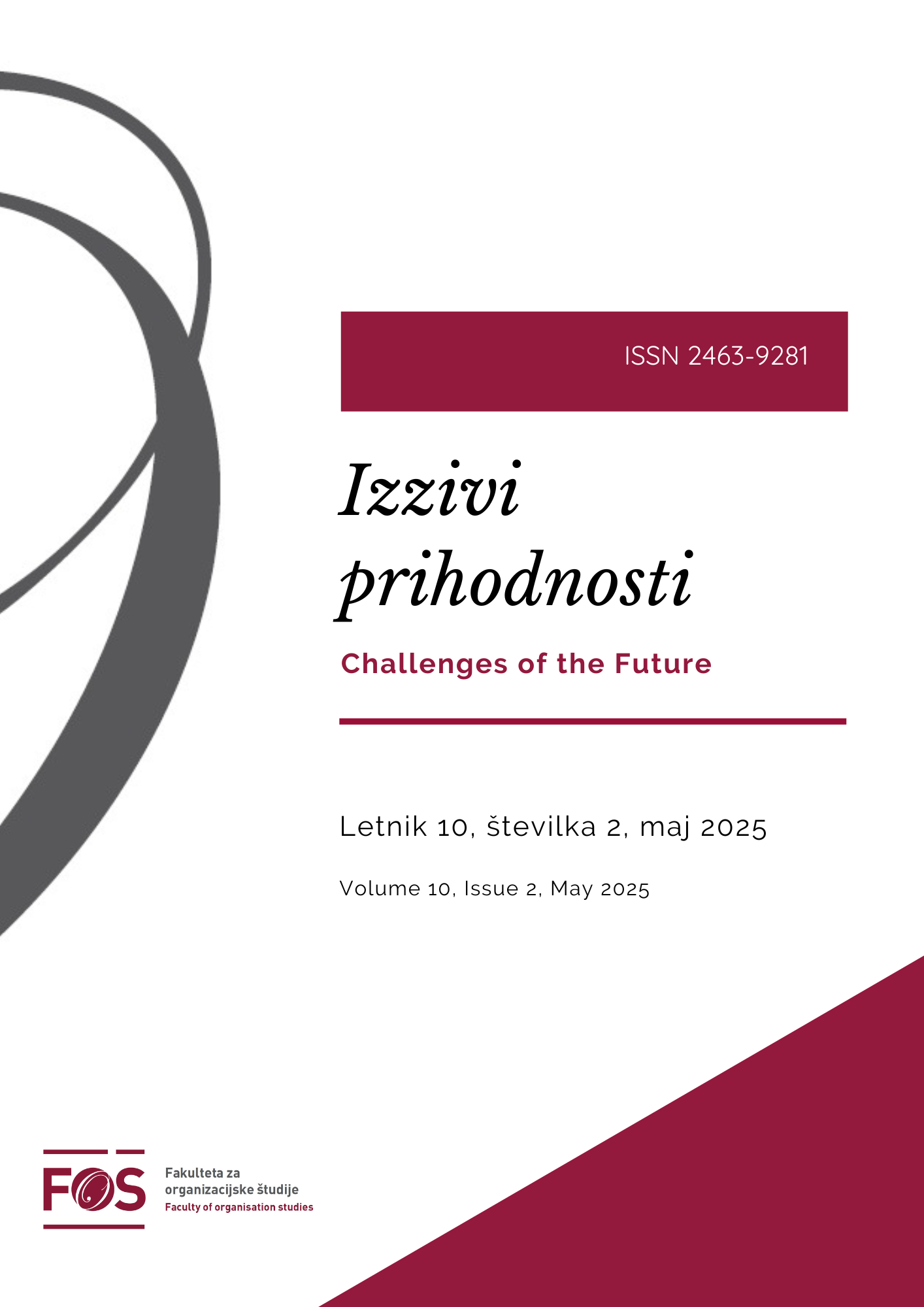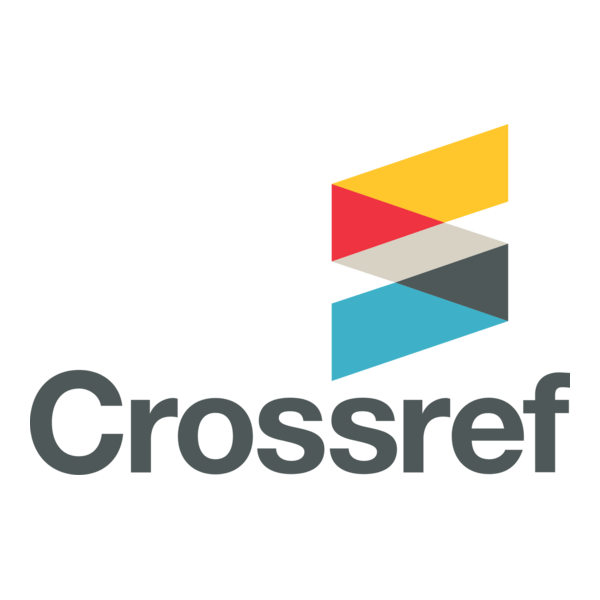Assessment of the Internal Efficiency of Slovenia's Tertiary Education System
DOI:
https://doi.org/10.37886/ip.2025.003Keywords:
efficiency, tertiary education systems, DEA method, OECD countries, education funding, graduatesAbstract
Research Question (RQ): In this article, we address the question of how efficient Slovenia's tertiary education system is compared to the systems of other OECD member countries and identify elements within the Slovenian system that could be further improved to achieve optimal relative efficiency.
Purpose: The research aims to shed light on the internal efficiency of Slovenia's tertiary education system and compare it with those of other OECD member countries, with the goal of analyzing areas where the Slovenian system falls short of achieving optimal performance.
Method: Using theoretical foundations to identify relevant inputs and outputs, along with secondary data from international databases, we applied the DEA method to examine the internal efficiency of tertiary education systems in 29 OECD member countries with complete data available for the study period.
Results: Results show that Slovenia’s tertiary education system did not achieve optimal relative efficiency in any of the four models applied. In terms of relative efficiency, Slovenia ranked between 20th and 25th among the 29 OECD countries examined. To achieve optimal relative efficiency, improvements in output measures for both pedagogical and research activities should be made.
Organization: The research results can serve as a valuable tool for decision-makers at the national level, as well as for managers of individual tertiary education institutions, in achieving greater efficiency.
Society: Achieving efficiency in tertiary education is crucial for broader society, not only for individuals participating in the educational process but also due to the wider impact that tertiary education has on the economy and society.
Originality: This is the first research to provide an overview of past studies on the efficiency of tertiary education systems, with a focus on evaluating the outcomes of Slovenia's tertiary education system. The study also delves into a detailed assessment of its efficiency achievements.
Limitations / further research: The research is based on secondary data obtained from international databases. The studied sample is not randomly selected but includes countries for which complete data were available for the entire period. It would be appropriate to enhance the research with a broader sample of countries and by using other or additional inputs and outputs, especially those that reflect the qualitative component of the utilized inputs and outputs.
Keywords: efficiency, tertiary education systems, DEA method, OECD countries, education funding, graduates.
References
Agasisti, T. (2009). Performances and spending efficiency in higher education: A European comparison through non‐parametric approaches. Education Economics, 19(2), 199-224. https://doi.org/10.1080/09645290903094174
Agasisti, T. (2014). The efficiency of public spending on education: An empirical comparison of EU countries. European Journal of Education, 49(4), 543-557. https://doi.org/10.1111/ejed.12069
Ahec Š. A., Deskar-Škrbić M., & in Šonje, V. (2018). Efficiency of public expenditure on education: Comparing Croatia with other NMS. MPRA paper 85152. https://mpra.ub.uni-muenchen.de/85152/1/MPRA_paper_85152.pdf
Aksnes, D. W., Langfeldt, L., & Wouters, P. (2019). Citations, citation indicators, and research quality: An overview of basic concepts and theories. SAGE Open, 9(1), 1-17. https://doi.org/10.1177/2158244019829575
Aristovnik, A., & Obadić, A. (2011). The funding and efficiency of higher education in Croatia and Slovenia: a non-parametric comparison. Amfiteatru Economic , 13(2011), 362-376. https://mpra.ub.uni-muenchen.de/31466/
Aubyn, M. S., Pina, Á. M., Garcia, F., & Pais, J. (2009). Study on the efficiency and effectiveness of public spending on tertiary education. European Commission: Economics paper 390. https://ec.europa.eu/economy_finance/publications/pages/publication16267_en.pdf
Banker, R. D., Charnes, A., & Cooper, W. W. (1984). Some models for estimating technical and scale inefficiencies in data envelopment analysis. Management Science, 30(9), 1078-1092. https://www.jstor.org/stable/2631725
Bevc, M. (1999). Financiranje, učinkovitost in razvoj izobraževanja. Radovljica: Didakta.
Bevc, M., & Uršič, S. (2008). Relations between funding, equity, and efficiency of higher education. Education Economics, 16, 229 - 244. https://doi.org/10.1080/09645290802338037
Bloom, D. E., Canning, D., & Chan, K. J. (2006). Higher education and economic development in Africa. Boston: Harvard University. https://www.edu-links.org/sites/default/files/media/file/BloomAndCanning.pdf
Bonaccorsi, A., Daraio, C., & Simar, L. (2014). Efficiency and economies of scale and scope in European universities: A directional distance approach. ISBA Discussion Paper, 2014/20, 1-30. https://doi.org/10.1016/j.joi.2015.03.002
Calderon, A. J. (2018). Massification of higher education revisited. http://cdn02.pucp.education/academico/2018/08/23165810/na_mass_revis_230818.pdf
Charnes, A., Cooper, W. W., & Rhodes, E. (1978). Measuring the efficiency of decision making units. European Journal of Operational Research, 2(6), 429-444. https://doi.org/10.1016/0377-2217(78)90138-8
Choong, K. K., & Leung, P. W. (2021). A critical review of the precursors of the knowledge economy and their contemporary research: Implications for the computerized new economy. Journal of the Knowledge Economy, 12(1), 1-38. https://link.springer.com/article/10.1007/s13132-021-00734-9
Coelli, T. J., Rao, D. S. P., O'Donnell, C. J., & Battese, G. E. (2005). An introduction to efficiency and productivity analysis (2nd ed.). New York: Springer Science+Business Media. https://dl.icdst.org/pdfs/files/3a67240be4e2274e4c95655ec16931de.pdf
De Witte, K., & López-Torres, L. (2017). Efficiency in education: A review of literature and a way forward. Journal of the Operational Research Society, 68(4), 339-363. https://doi.org/10.1057/jors.2015.92
Drucker, P. F. (1993). Post-capitalist society. New York: Harper Business.
Dyson, R. G., Allen, R., Camanho, A. S., Podinovski, V. V., Sarrico, C. S., & Shale, E. A. (2001). Pitfalls and protocols in DEA. European Journal of Operational Research, 132(2), 245-259. https://doi.org/10.1016/S0377-2217(00)00149-1
Estremann, T., & Kupriyanova, V. (2019). Efficiency, effectiveness, and value for money at universities. Brussels: European University Association. https://www.eua.eu/downloads/publications/efficiency%20effectiveness%20and%20value%20for%20money.pdf
European Commission. (2024). Education and Training Monitor 2024. Publications Office of the European Union. https://op.europa.eu/webpub/eac/education-and-training-monitor/en/country-reports/slovenia.html.
Farrell, M. J. (1957). The measurement of productive efficiency. Journal of the Royal Statistical Society, Series A, 120(3), 253-281. https://www.jstor.org/stable/2343100
Ghaffarzadegan, N., Xue, Y., & Larson, R. C. (2017). Work-education mismatch: An endogenous theory of professionalization. European Journal of Operational Research, 261(3), 1085-1097. https://doi.org/10.1016/j.ejor.2017.02.041
Giménez, V., Prior, D., & Thieme, C. (2007). Technical efficiency, managerial efficiency, and objective-setting in the educational system: An international comparison. Journal of the Operational Research Society, 58(8), 996-1007. https://doi.org/10.1057/palgrave.jors.2602213
Golany, B., & Roll, Y. (1989). An application procedure for DEA. Omega-International Journal of Management Science, 17(3), 237-250. https://doi.org/10.1016/0305-0483(89)90029-7
Hanusek, E. A. (2005). Pseudo-science and a sound basic education: Voodoo statistics in New York. http://hanushek.stanford.edu/publications/pseudo-science-and-sound-basic-education-voodoo-statistics-new-york
Jelić, O.N., & Kedžo, M.G. (2018). Efficiency vs effectiveness: an analysis of tertiary education across Europe. Public sector economics. 42 (4): 318-414. https://www.pse-journal.hr/en/archive/efficiency-vs-effectiveness-an-analysis-of-tertiary-education-across-europe_3463/full-article/
Johnes, J. (2005). Data envelopment analysis and its application to the measurement of efficiency in higher education. Economics of Education Review, 25(3), 273-288. https://doi.org/10.1016/j.econedurev.2005.02.005
Johnson, I. Y. (2010). Class size and student performance at a public research university: A cross-classified model. Research in Higher Education, 51(7), 701-723. https://link.springer.com/article/10.1007/s11162-010-9179-y
Kaneko, M. (2006). Marketisation of higher education – trends, issues, and prospects. http://ump.p.u-tokyo.ac.jp/crump/resource/crump_wp_no1.pdf.
Lane, J. (2012). Higher education and economic competitiveness. In J. Lane & B. Johnstone (Eds.), Colleges and universities as economic drivers: Measuring higher education's contribution to economic development. Albany: SUNY Press.
Liu, F., & Xu, H. (2017). Effects of educational efficiency on national competitiveness based on cross-national data. Education Sciences, 7(3), 81-93. https://doi.org/10.3390/educsci7040081
McMahon, W. W. (1982). Efficiency and equity criteria for educational budgeting and finance. In W. McMahon & T. Geske (Eds.), Financing education: Overcoming inefficiency and inequity (pp. 1-22). Urbana: University of Illinois Press.
Mihaljević Kosor, M. (2013). Efficiency measurement in higher education: Concepts, methods, and perspective. Procedia - Social and Behavioral Sciences, 106, 1031-1038. https://doi.org/10.1016/j.sbspro.2013.12.117
Mihaljević, K. M., Malešević, P. L., & Golem, S. (2019). Efficiency of public spending on higher education: a data envelopment analysis for EU-28. Problems of Education in the 21st Century 77 (3): 396-409. https://www.scientiasocialis.lt/pec/node/files/pdf/vol77/396-409.Mihaljevic%20Kosor_Vol.77-3_PEC.pdf
Miningou, É. W., & Tapsoba, S. J. (2020). Education systems and foreign direct investment: Does external efficiency matter? Journal of Applied Economics, 23(3), 583-599. https://doi.org/10.1080/15140326.2020.1797337
OECD. (1996). The knowledge-based economy. Paris: OECD Publishing. https://one.oecd.org/document/OCDE/GD%2896%29102/En/pdf
OECD. (2024). Education at a glance 2024. Paris: OECD Publishing. https://www.oecd.org/en/publications/education-at-a-glance-2024_c00cad36-en.html
Olssen, M., & Peters, M. A. (2005). Neoliberalism, higher education, and the knowledge economy: From the free market to knowledge capitalism. Journal of Education Policy, 20(3), 313-345. https://doi.org/10.1080/02680930500108718
Rothschild, M. L., & White, L. J. (1995). The analytics of the pricing of higher education and other services in which the customers are inputs. Journal of Political Economy, 103(3), 573-586. https://www.jstor.org/stable/2138699
Saljoughian, M., Ghandehari, M., Shirouyehzad, H., Dabestani, R., & Balouei, H. (2013). Performance evaluation of OECD countries by data envelopment analysis based on science and technology factors. Journal of Applied Science and Engineering Management, 1(1), 24-35.
Salas‐Velasco, M. (2019). The technical efficiency performance of higher education systems based on data envelopment analysis with an illustration for the Spanish case. Educational Research for Policy and Practice, 19(2), 159-180. https://link.springer.com/article/10.1007/s10671-019-09254-5
Salerno, C. (2003). What we know about the efficiency of higher education institutions: The best evidence. Enschede: Center for Higher Education Policy Studies (CHEPS). https://www.minocw.nl/documenten/bhw-99-bgo99.pdf
Scheerens, J. (2011). Perspectives on educational quality. In J. Scheerens, H. Luyten, & J. van Ravens (Eds.), Perspectives on educational quality – Illustrative outcomes on primary and secondary schooling in the Netherlands (pp. 1-25). Dordrecht: Springer. https://link.springer.com/book/10.1007/978-94-007-0926-3
Sinuany-Stern, Z., & Hirsh, A. (2021). The relative efficiencies of higher education in OECD countries. International Series in Operations Research & Management Science, 12(1), 481-512. https://link.springer.com/chapter/10.1007/978-3-030-74051-1_16
Stefanova, K. (2019). New Approach to Evaluation of the Efficiency of Higher Education Expenditure in Regard to Quality Achieved (Evidence from Selected Countries from Central and Eastern Europe). Political Economy: Government Expenditures & Related Policies eJournal (2019): 25-34. https://papers.ssrn.com/sol3/papers.cfm?abstract_id=3537493
Stefanova, K. & Velichkov, N. (2020). Analysis of the Efficiency of Tertiary Education Expenditure in European Union Member States from Central and Eastern Europe: An Efficiency Frontier Approach. South-Eastern Europe Journal of Economics 18 (2020): 115-128. https://www.asecu.gr/Seeje/issue34/issue34-stefanova-ongan.pdf
Sum, N.-L., & Jessop, B. (2012). Competitiveness, the knowledge-based economy, and higher education. Journal of the Knowledge Economy, 4(1), 24-44. https://link.springer.com/article/10.1007/s13132-012-0121-8
Tajnikar, M. (2006). Mikroekonomija (2nd ed.). Ljubljana: Ekonomska fakulteta.
Warning, S. (2004). Performance differences in German higher education: Empirical analysis of strategic groups. Review of the industrial organization. 24(2004), 393 - 408 https://www.jstor.org/stable/41799192
Yotova, L., & Stefanova, K. (2017). Efficiency of Tertiary Education Expenditure in CEE Countries: Data Envelopment Analysis. AARN: Economic alternatives, 3 (2017), 352 – 364. https://papers.ssrn.com/sol3/papers.cfm?abstract_id=3099398
Additional Files
Published
How to Cite
Issue
Section
License
Copyright (c) 2025 Sandi Vrabec, Borut Kodrič

This work is licensed under a Creative Commons Attribution-ShareAlike 4.0 International License.
![]()








